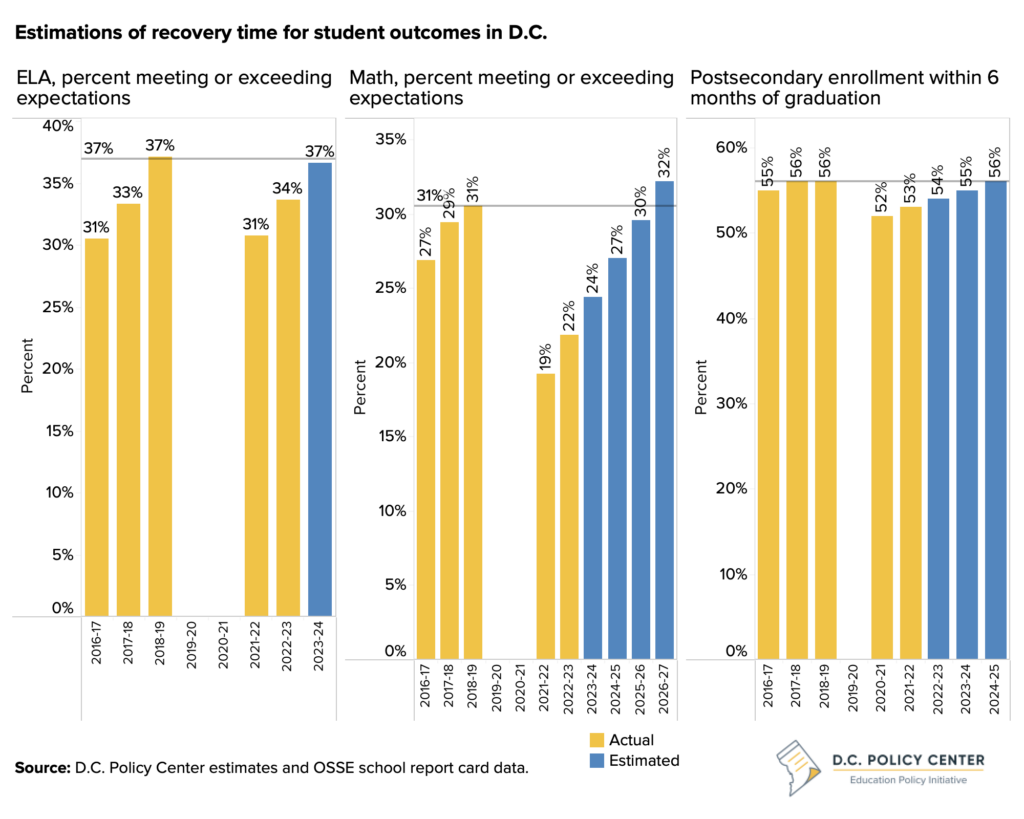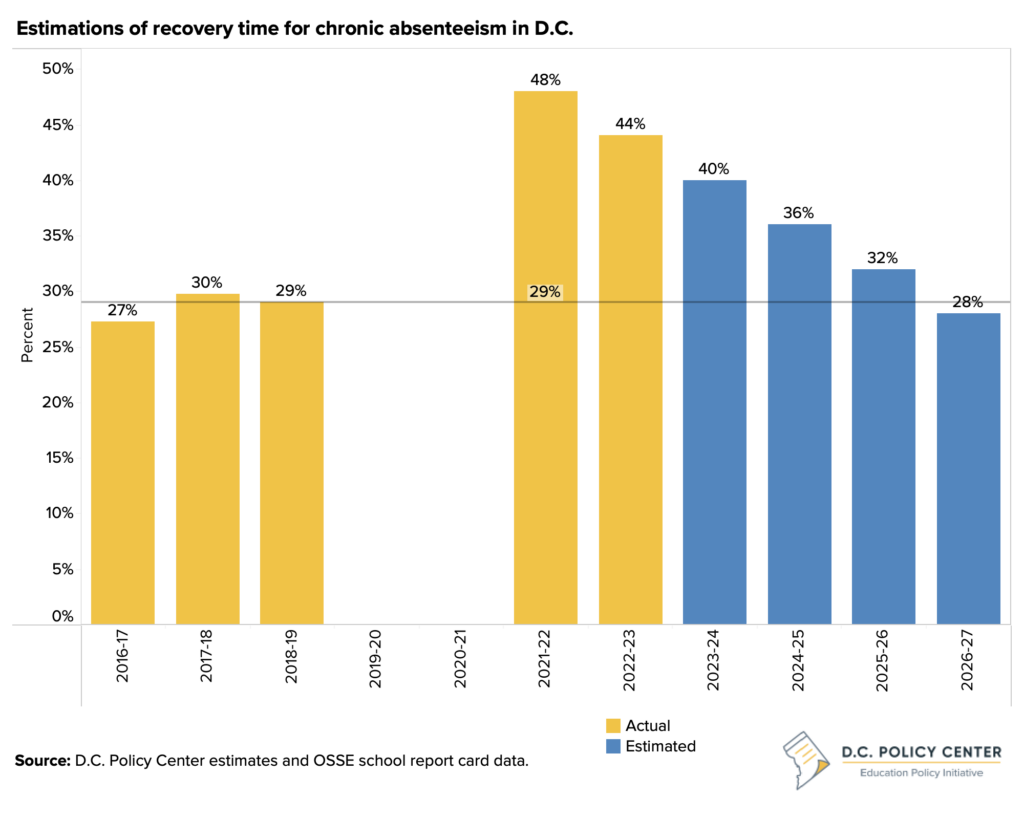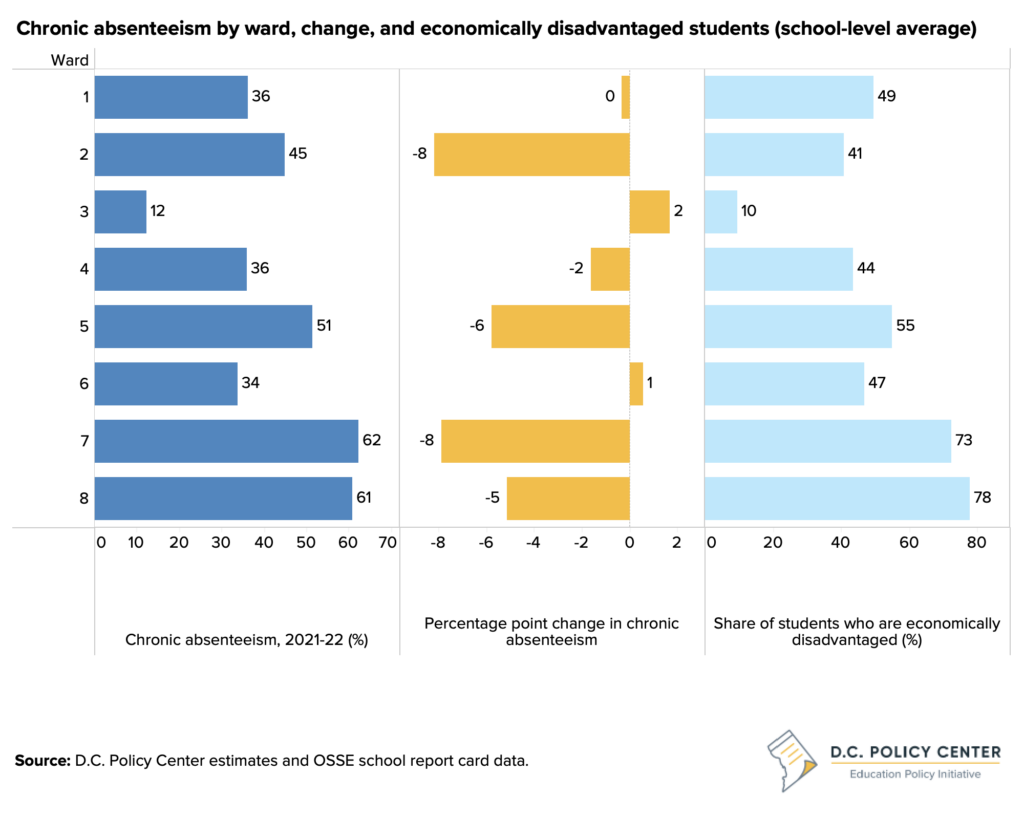

On Wednesday, February 28, 2024, Education Policy Initiative Director Chelsea Coffin testified before the D.C. Council Committee of the Whole at its performance oversight hearing. Her testimony focuses on the estimated recovery times for student outcomes and chronic absenteeism. You can read her testimony below, or download a PDF copy.
Today, I will preview findings from State of D.C. Schools, 2022-23 to flag which metrics are most important to show improvement in school year 2023-24. Attendance is especially critical to watch as being in school is necessary for students to benefit from any investments in public education.


The D.C. Policy Center’s State of D.C. Schools for school year 2022-23 finds important incremental progress across key metrics in the two full years of in-person school for D.C.’s public schools. However, for the most part, outcomes are below or at the same level as pre-pandemic, indicating that pandemic recovery in education continues to be a multi-year process. Teacher retention, at 70 percent in the same role and the same school, and out-of-school suspensions, at 6 percent, have returned to pre-pandemic levels, while high school graduation has increased by 8 percentage points to 76 percent. Learning outcomes in English Language Arts (ELA) and math are below pre-pandemic, and if improvements continue at the same pace as last year, students may catch up to pre-pandemic levels in ELA in this school year (2023-24) but will not reach pre-pandemic levels in math until school year 2026-27. Postsecondary enrollment also dipped during the pandemic to 53 percent for the class of 2021-22 and may take until the class of 2024-25 to return to pre-pandemic levels.


Most importantly, chronic absenteeism, or the share of students missing 10 percent or more of the school year, increased by 14 percentage points compared to pre-pandemic, making it harder to move the needle on other student outcomes. In school year 2022-23, 44 percent of students were chronically absent, and absenteeism was even higher for high school students at 60 percent. If D.C. continues to decrease chronic absenteeism by 4 percentage points a year as happened in the first two years of in-person school after the pandemic began, it will be school year 2026-27 before attendance is back to pre-pandemic levels, which were already higher than the national average. Schools in Wards 2, 5, 7, and 8 had both the highest average rates of chronic absenteeism as well as the largest decreases on average. Aside from Ward 2, these wards are also home to the schools serving the highest percentages of students who are economically disadvantaged. Reducing absenteeism must remain a focus at all schools to ensure students can continue to recover from the pandemic both academically and socio-emotionally.


Looking forward to the fiscal year 2025 budget, it will be critical to assess what has been working, especially in the areas of learning, absenteeism, and postsecondary outcomes for students. This will be a transition year in terms of funding, with federal Elementary and Secondary School Emergency Relief (ESSER) funds expiring or needing to be committed by September 2024 with the opportunity for extension.1 We commend the Mayor’s proposed 12.4 percent increase to the Uniform Per Student Funding Formula (UPSFF) foundation level, which will soften the landing from this fiscal cliff. As these funds may not cover all the additional resources schools received over the past few years, schools must take stock of school year 2023-24 and invest in what is working as well as systems to measure progress through initiatives like the Office of Education Through Employment Pathways and others.
Endnotes
- Sayin, Y. and Coffin, C. 2024. The fiscal future of public education in the District of Columbia. D.C. Policy Center. Retrieved from https://www.dcpolicycenter.org/publications/dc-fiscal-future-in-education/
